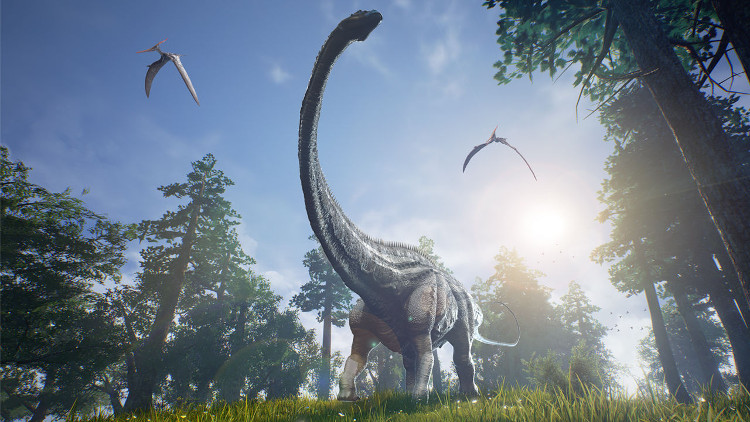Special vertebral structure helps dinosaurs support body weight
In the study published in Ameghinian magazine, a paleontologist specializing in vertebrate animals John Fronimos at the University of Michigan (USA) introduced him to discover the unique structural characteristics Origin of vertebrae in large dinosaur Sauropods (a branch of the lizard hip dinosaur).
According to ddos, the boundary between the upper and lower sections of the vertebrae is not straight but has a zigzag shape. John Fronimos and co-author of the study Jeffrey Wilson believes that this attribute allows Sauropods to reach huge sizes.
Dinosaurs are giant animals up to 50m long and weighing up to 77 tons. Their necks are also long, like, super Supersaurus dinosaurs (a dinosaur genus belonging to the Sauropod set) with a length of 15m with a total body length of about 33m.

In Sauropod dinosaurs, the vertebrae are rigid when they reach the age of 20, which has reached adult size.(Illustration).
For many years, scientists have recorded some adaptive transformations in the Sauropod reptile skeleton, in order to support the giant body.
Like other vertebrates, the vertebrae consist of two main parts: the cylindrical vertebral body (corpus vertebrae) and the arcus vertebrae that have an arched shape . The long holes between the vertebral body and the artery contain the spinal cord. They are arranged separately, then gradually connected and developed together. But before connecting together, the vertebral body is connected to the arc by elastic cartilage tissue.
In Sauropod dinosaurs, the vertebrae are rigid when they reach the age of 20, which has reached adult size. Paleontologist John Fronimos began studying Spinophorosaurus nigerensis dinosaur fossils in one of the museums in Spain and found that the seam formed the boundary between the vertebral body and the vertebra of the vertebrae, no straight but twisted.
Scientists believe that the parts of the vertebrae fit exactly like the core jigsaw to increase the contact area between the bones and to distribute the load over a larger area, reducing the pressure on each separate points. This helped the bulky and heavy Sauropod dinosaurs support their weight.
- Special weight loss device helps prevent appetite
- Detect special structure in human tooth enamel
- Successfully implanted 3D print vertebrae on human body
- Properly drinking milk helps control body weight
- Special invention helps impressive weight loss
- Stomach tightening - an effective solution for obese people
- Dinosaurs are much lighter than previously assumed
- What would happen if the human body has a structure similar to animals?
- Invention helps children with disabilities to walk normally
- You may not know: The human body contains fat that helps us lose weight
- Erotic dance of carnivorous dinosaurs
- Detecting dinosaurs like bulls
 Discovered an ancient centipede fossil 99 million years old
Discovered an ancient centipede fossil 99 million years old Discovered bat-like dinosaurs in China
Discovered bat-like dinosaurs in China Discovered a 200-year-old bronze cannon of the coast
Discovered a 200-year-old bronze cannon of the coast Discover 305 million-year-old spider fossils
Discover 305 million-year-old spider fossils